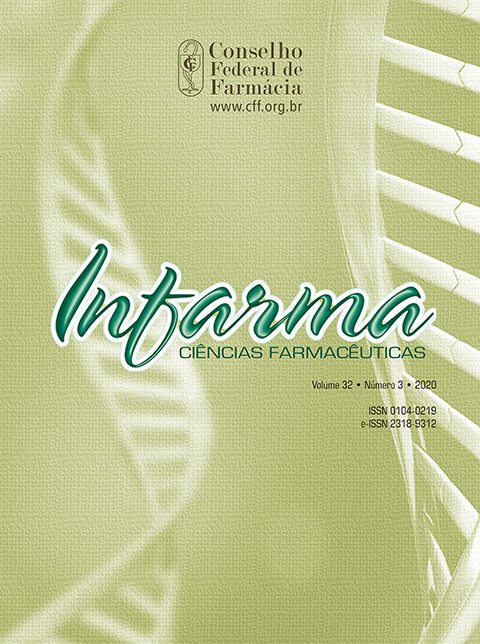SURVEY OF DRUGS DISCARDED BY THE POPULATION OF JARAGUÁ DO SUL AND CORUPÁ, SC, BRAZIL THROUGH THE SELF-AWARE DISPOSAL PROGRAM
DOI:
https://doi.org/10.14450/2318-9312.v32.e3.a2020.pp262-270Keywords:
Chronic disease, shelf-life of medicines, solid wasteAbstract
The increase in the use of medicines due to the development of new medicines, combined with selfmedication, leads to a greater formation of waste, which causes damage to the environment and damage to the health of the population. Thus, the objective of the present study was to evaluate the drugs collected by the Conscious Disposal Program in the municipalities of Jaraguá do Sul and Corupá, SC, Brazil for one year, in addition to raising awareness among the population about correct disposal and automatic
application. For this, lectures were held at UBS and at the Municipalities Center to promote this awareness. After the lectures, collective boxes of medicines were made available to the population. After the collection or collection of medicines, the value of your name, quantity, pharmaceutical form, price, validity and classifi ed data is according to ATC. The results found were disseminated to a population in the form of lectures, with the objective of raising awareness. 7,528 total units were included, with emphasis on tuberculostatics (25.75%), antihypertensives (10.66%), oral contraceptives (8.42%), analgesics (5.36%) and anti-infl ammatories (3, 22%). The greater number of classes of discarded drugs may be associated with a greater use of these by the population, provision by the public network, irregular use or lack of adherence to treatment. Conclude that, an analysis of discarded drugs can contribute to a better understanding of the factors that can lead to excessive disposal, as well as they can assist in awareness campaigns about environmental damage and the damage that a disposal of these drugs can cause to the population’s health.
Downloads
Published
How to Cite
Issue
Section
License
Authors who publish in this journal agree to the following terms:
- Authors retain the copyright and grant the journal the right of first publication, with the work simultaneously licensed under the Licença Creative Commons Attribution which allows the sharing of work with acknowledgment of authorship and initial publication in this journal.
- Authors are authorized to take additional contracts separately, for non-exclusive distribution of the version of the work published in this journal (e.g. publish in institutional repository or as a book chapter), with acknowledgment of authorship and initial publication in this journal.
- Authors are allowed and encouraged to publish and distribute their work online (e.g. in institutional repositories or on their personal page) at any point before or during the editorial process, as this can generate productive changes as well as increase the impact and Citation of published work (See O Efeito do Acesso Livre ).


